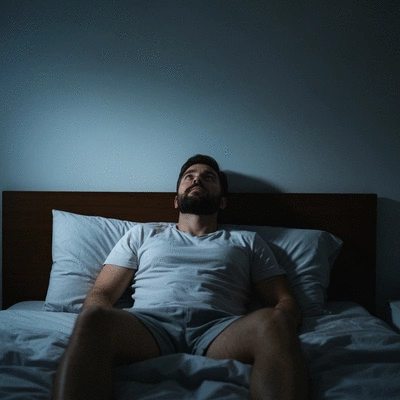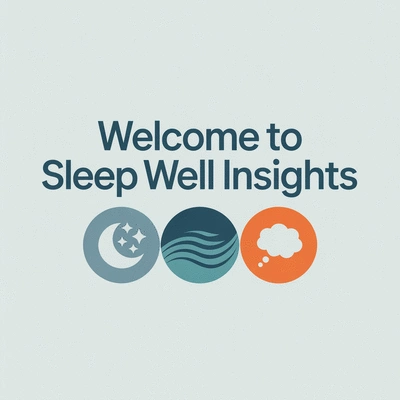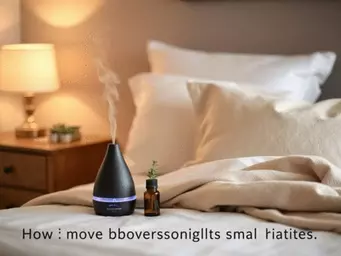As you grapple with sleeplessness, consider this: understanding insomnia is not merely a step towards better sleep, but a pathway to reclaiming your well-being. With millions affected, the insights you gain here can illuminate your path to restful nights.
What You Will Learn
- Insomnia affects approximately one in three adults, highlighting its prevalence and need for understanding.
- Recognizing the types of insomnia—temporary, chronic, and secondary—can lead to more tailored solutions.
- Acute insomnia is often linked to stress and can resolve quickly, while chronic insomnia necessitates sustained intervention.
- Effective management includes lifestyle changes, sleep hygiene practices, and when needed, professional help.
- Utilizing tools like sleep journals can help identify patterns and triggers that affect your sleep quality.
- Making small adjustments in your nightly routine can significantly enhance overall sleep quality.
Understanding Insomnia: Acute vs. Chronic
Differentiating between acute and chronic insomnia is key to effective management. This visual highlights their core distinctions.
Acute Insomnia
- • Duration: Few days to weeks
- • Cause: Specific stressors (e.g., life events)
- • Resolution: Often resolves naturally
Chronic Insomnia
- • Duration: 3 months or longer
- • Cause: Often linked to ongoing health issues
- • Impact: Significantly affects daily life
Global Prevalence
1 in 3
Adults experience insomnia at some point in their lives, highlighting its widespread impact.
Key Treatment Areas
- • CBT-I: Cognitive Behavioral Therapy for Insomnia
- • Medication: When necessary, under professional guidance
- • Lifestyle: Sleep hygiene, routine adjustments
Understanding Insomnia: A Comprehensive Overview
Have you ever found yourself wondering why sleep seems to elude you night after night? You're definitely not alone. Insomnia is a widespread issue that affects millions, and understanding it is the first step toward reclaiming those restful nights. At Sleep Well Insights, I'm dedicated to helping you demystify this condition and find ways to improve your sleep quality.
Insomnia isn't just about a few restless nights; it's a challenging condition that can manifest in various forms. From difficulty falling asleep to waking up too early, insomnia takes many shapes. Let's explore what insomnia really is and how common it actually is.

What Is Insomnia and How Common Is It?
Insomnia is defined as a persistent difficulty in falling or staying asleep, often resulting in daytime fatigue or mood disturbances. According to the Sleep Foundation, it affects approximately one in three adults at some point in their lives! This statistic highlights the prevalence of insomnia, making it crucial to understand its roots and implications.
- Temporary insomnia: Often triggered by stress or a significant life change.
- Chronic insomnia: Occurs at least three times per week for three months or longer.
- Secondary insomnia: Related to underlying health conditions or medications.
By recognizing the different types of insomnia, we can better approach solutions tailored to individual needs.
The Definition and Types of Insomnia
As a sleep health advocate, I take a keen interest in understanding the various types of insomnia that can impact our well-being. Distinguishing between these types allows us to pinpoint the most effective strategies for overcoming them. Here’s a closer look at the two primary categories: acute and chronic insomnia.
Distinguishing Between Acute Insomnia and Chronic Insomnia
Acute insomnia typically arises from specific stressors and is temporary, often resolving within a few days or weeks. In contrast, chronic insomnia lasts for months or even longer, affecting daily life significantly. It’s important to identify which type you're experiencing to take appropriate action!
- Acute Insomnia: Lasts for a few days to weeks, usually related to stress or life events.
- Chronic Insomnia: Persists for three months or more, often linked to ongoing health issues.
Understanding whether your insomnia is acute or chronic can lead to targeted solutions that can help you sleep better. Keep this in mind as we delve deeper into the triggers and symptoms of insomnia.
Pro Tip
Incorporate mindfulness techniques into your bedtime routine. Simple practices like deep breathing or gentle yoga can help calm your mind and reduce anxiety, making it easier to drift off to sleep. Try dedicating just 10 minutes before bed to focus on your breath and let go of the day's stress.
Frequently Asked Questions About Insomnia
Q: What is insomnia?
A: Insomnia is a persistent difficulty in falling or staying asleep, often leading to daytime fatigue or mood disturbances.
Q: How common is insomnia?
A: Approximately one in three adults experiences insomnia at some point in their lives, highlighting its widespread impact.
Q: What are the main types of insomnia?
A: The main types are temporary (acute), chronic, and secondary insomnia. Acute insomnia is short-term and stress-related, while chronic insomnia lasts for months or longer and is often linked to ongoing health issues. Secondary insomnia is related to underlying health conditions or medications.
Q: What is the difference between acute and chronic insomnia?
A: Acute insomnia lasts for a few days to weeks, usually triggered by specific stressors. Chronic insomnia persists for three months or more, often linked to ongoing health issues, and significantly impacts daily life.
Q: What are some effective strategies for managing insomnia?
A: Effective strategies include lifestyle changes, practicing good sleep hygiene (consistent sleep schedule, relaxing bedtime routine, comfortable sleep environment), and seeking professional help for tailored treatments like Cognitive Behavioral Therapy for Insomnia (CBT-I) or medication when necessary. Utilizing tools like sleep journals can also help track patterns and progress.
Summarizing Key Insights on Insomnia Management
As we navigate the complexities of insomnia, it’s essential to pause and reflect on what we've learned. Throughout this discussion, we’ve explored the various causes, symptoms, and treatment strategies that can empower you to reclaim your sleep. From lifestyle factors to the psychological influences that disrupt our rest, understanding these elements is the first step toward effective management.
Here’s a quick recap of the key insights:
- Common causes include stress, anxiety, and lifestyle habits.
- Symptoms range from difficulty falling asleep to chronic fatigue.
- Effective treatment strategies involve behavioral changes, sleep hygiene practices, and, when necessary, professional help.
Recognizing these components can illuminate your path toward better sleep quality. At Sleep Well Insights, we believe that knowledge is a powerful tool in tackling the challenges of sleeplessness. The National Sleep Foundation emphasizes the crucial link between sleep and overall mental well-being, highlighting the importance of addressing sleep disturbances.
The Importance of Seeking Professional Help and Guidance
While self-help strategies can be effective, there’s no substitute for professional guidance when dealing with persistent insomnia. Consulting with a healthcare provider can provide tailored insights specific to your situation. They can help identify underlying health issues or recommend therapies that might be most beneficial for you.
In many cases, professionals can offer:
- Cognitive Behavioral Therapy (CBT) specifically designed for insomnia.
- Medication options if necessary, to help manage symptoms effectively.
- Personalized advice on lifestyle changes that promote restful sleep.
Don't hesitate to reach out for help—taking that step can be incredibly liberating. Remember, you’re not alone in this journey, and there are resources available to support you every step of the way!

Encouraging Action: Steps to Take for Better Sleep
Implementing Sleep Hygiene: Starting Your Journey Today
Now that you have a clearer understanding of insomnia and its implications, it’s time to take action! Implementing proper sleep hygiene can profoundly impact your overall sleep quality. Here are some practical steps to consider:
- Create a consistent sleep schedule by going to bed and waking up at the same time every day.
- Develop a relaxing bedtime routine to signal your body that it’s time to wind down.
- Limit exposure to screens and bright lights in the hour leading up to bedtime.
- Create a comfortable sleep environment: dark, cool, and quiet.
By starting to implement these changes today, you can set the groundwork for more restful nights. Every small adjustment contributes to a larger goal of improving your sleep quality! The CDC's recommendations on sleep hygiene further reinforce these practices for better public health.
Resources and Support for Managing Insomnia Effectively
Managing insomnia doesn’t have to be a solitary journey. At Sleep Well Insights, we offer valuable resources to help you along the way. These can include articles, expert insights, and practical strategies tailored to your needs. Additionally, consider utilizing:
- Sleep journals to track your patterns and progress.
- Support groups where you can share experiences and coping strategies with others.
- Online forums and communities focused on sleep health.
Utilizing these resources can provide you with additional perspectives and techniques for overcoming insomnia. You deserve restful nights, and with the right support, achieving that dream is within your reach!
Using Sleep Journals to Track Sleep Patterns and Progress
One effective tool in managing insomnia is keeping a sleep journal. This simple yet powerful practice can help you identify patterns and triggers that affect your sleep. Here’s how to start:
- Record the time you go to bed and wake up each day.
- Note any factors that may have influenced your sleep, such as food, exercise, or stress levels.
- Reflect on your overall mood and energy levels during the day.
By tracking this information, you can gain insights that lead to meaningful changes, helping you take control of your sleep journey. Remember, every step you take is a step towards better sleep and a healthier, more rejuvenated life!
Recap of Key Points
Here is a quick recap of the important points discussed in the article:
- Insomnia affects approximately one in three adults and can be categorized into temporary, chronic, and secondary insomnia.
- Understanding the difference between acute and chronic insomnia is crucial for effective treatment.
- Common causes include stress, anxiety, and poor lifestyle habits, while symptoms can vary from difficulty falling asleep to chronic fatigue.
- Effective management strategies encompass lifestyle changes, sleep hygiene practices, and seeking professional help when necessary.
- Maintaining a sleep journal can provide valuable insights into sleep patterns and triggers.









